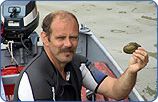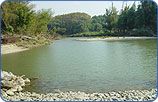 |
The Danube Regional Project is here to take actions at national and local level to ensure participation of public in environmental decision making and to involve local stakeholders, like farmers, industrial companies, NGOs into pollution reduction measures and to increase overall awareness on environmental issues. On 1st December 2001, the 5 years UNDP/GEF Danube Regional Project “Strengthening the Implementation Capacities for Nutrient Reduction and Transboundary Cooperation in the Danube River Basin” was launched. The Project is building on existing mechanisms of regional cooperation and previous intervention of the UNDP GEF in this region. In 1998, the Danube River Protection Convention (DRPC) came into force after it was ratified by 8 Danube states and the European Commission. The International Commission for the Protection of the Danube River (ICPDR) was created to coordinate the implementation of the convention. Since its creation, the ICPDR has been effective in reaching agreed policy among countries on priorities and strategies for improving the Danube and implementing the DRPC. This includes improving tools to manage the basin such as the Accident Emergency Warning System, the Trans-National Monitoring Network for water quality and the information system for the Danube (DANUBIS). In effect, it has done much to promote trans-boundary cooperation among numerous countries in a highly complex European region. UNDP, with support from the Global Environment Facility (GEF),has been working to address priority environmental problems in the Danube since 1992. The GEF is the financing mechanism created to address global environmental issues such as biodiversity protection, international waters and climate change. This initial assistance helped build the basis for cooperation leading to the signing and ratification of the DRPC. It helped quantify the sources and volume of pollution, especially nutrients and toxins, entering the Black Sea via the Danube. And it helped identify future targets and concrete projects to reduce that pollution. LONG TERM AND OVERALL OBJECTIVE |
 |
From the long-term point of view the Danube Regional Project contributes to sustainable human development in the Danube River Basin and the wider Black Sea area through reinforcing the capacities of the participating countries in developing effective mechanisms for regional cooperation and coordination in order to ensure protection of international waters, sustainable management of natural resources and biodiversity. The Danube Regional Project is complementing the activities of the ICPDR required to provide a regional approach to the development of national policies and legislation and the definition of priority actions for pollution control with particular attention to achieving sustainable ecological effects within the Danube River Basin and the Black Sea Area. The following project components are designed to respond to the overall development objective:
THE FIRST PHASEof the project (2002-2003) was specifically focusing on preparation and initiating of basin-wide capacity-building activities with particular attention to the development and implementation of policies for pollution reduction, effective legal and economic instruments, mechanisms for monitoring and evaluation, the creation of inter-ministerial committees as well as the development of programmes for public participation and NGO strengthening. Altogether 20 project components with a number of activities are being carried out thereby establishing a solid base for the implementation of Phase 2 of the Project. THE PHASE TWOof the Project (2004-2006) will set up institutional and legal instruments at the national and regional level to assure nutrient reduction and sustainable management of water bodies and ecological resources, involving all stakeholders and building up adequate monitoring and information systems.
|






